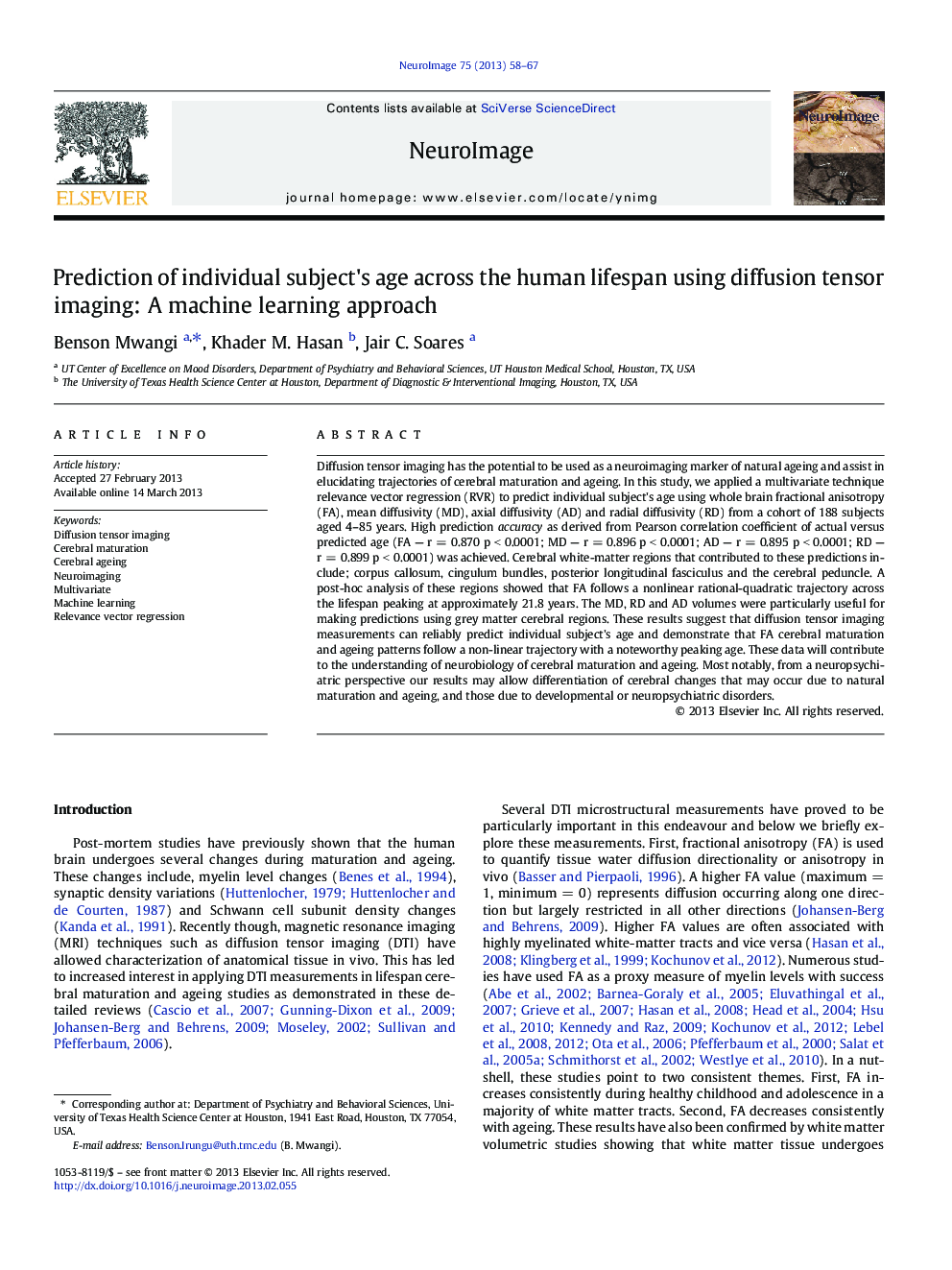| Article ID | Journal | Published Year | Pages | File Type |
|---|---|---|---|---|
| 6029495 | NeuroImage | 2013 | 10 Pages |
Abstract
Diffusion tensor imaging has the potential to be used as a neuroimaging marker of natural ageing and assist in elucidating trajectories of cerebral maturation and ageing. In this study, we applied a multivariate technique relevance vector regression (RVR) to predict individual subject's age using whole brain fractional anisotropy (FA), mean diffusivity (MD), axial diffusivity (AD) and radial diffusivity (RD) from a cohort of 188 subjects aged 4-85 years. High prediction accuracy as derived from Pearson correlation coefficient of actual versus predicted age (FA - r = 0.870 p < 0.0001; MD - r = 0.896 p < 0.0001; AD - r = 0.895 p < 0.0001; RD - r = 0.899 p < 0.0001) was achieved. Cerebral white-matter regions that contributed to these predictions include; corpus callosum, cingulum bundles, posterior longitudinal fasciculus and the cerebral peduncle. A post-hoc analysis of these regions showed that FA follows a nonlinear rational-quadratic trajectory across the lifespan peaking at approximately 21.8 years. The MD, RD and AD volumes were particularly useful for making predictions using grey matter cerebral regions. These results suggest that diffusion tensor imaging measurements can reliably predict individual subject's age and demonstrate that FA cerebral maturation and ageing patterns follow a non-linear trajectory with a noteworthy peaking age. These data will contribute to the understanding of neurobiology of cerebral maturation and ageing. Most notably, from a neuropsychiatric perspective our results may allow differentiation of cerebral changes that may occur due to natural maturation and ageing, and those due to developmental or neuropsychiatric disorders.
Keywords
Related Topics
Life Sciences
Neuroscience
Cognitive Neuroscience
Authors
Benson Mwangi, Khader M. Hasan, Jair C. Soares,
